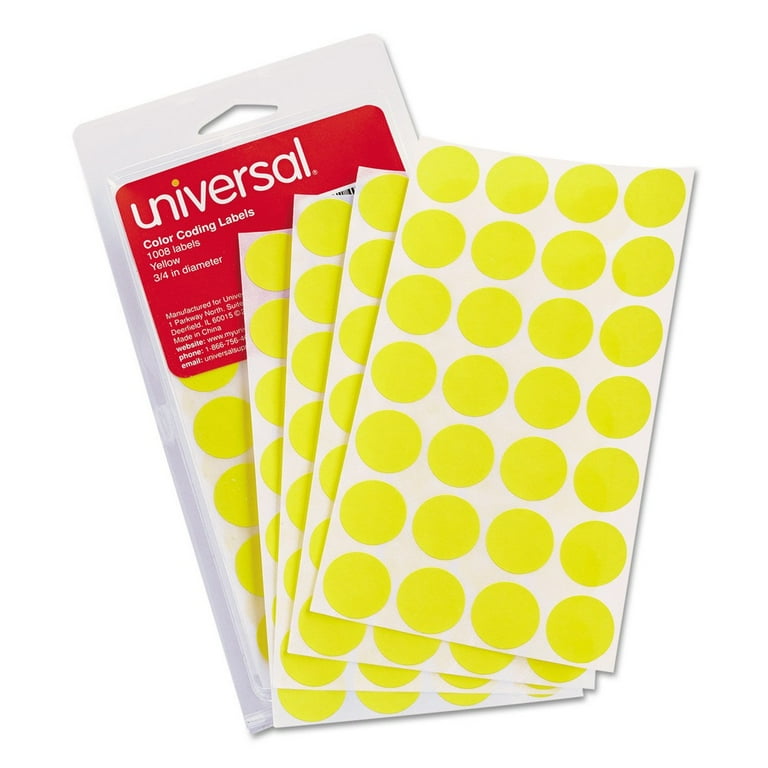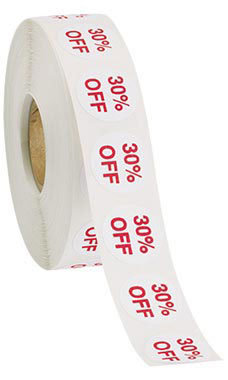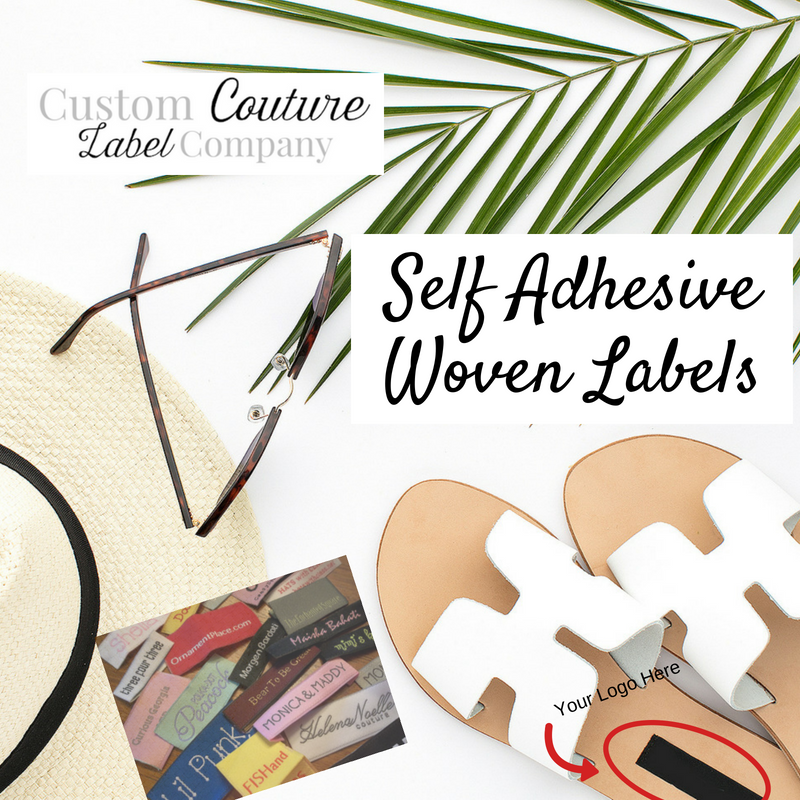Selecting the Right Self-Adhesive Labels for Your Organization and Personal Demands
Picking the proper self-adhesive tags for both company and personal applications calls for a nuanced understanding of numerous aspects that influence their performance. As we discover these critical elements, it comes to be clear that a tactical method is vital to guarantee your tags not only satisfy assumptions but additionally enhance your general branding and organization efforts.

Understanding Tag Materials
When selecting self-adhesive labels, understanding the numerous label products is important to making sure optimum performance and sturdiness. The option of material straight affects the label's longevity, performance, and look. Usual label materials include paper, polyester, vinyl, and polypropylene, each offering distinctive benefits and disadvantages.

Polyester tags use superior longevity, being resistant to tearing, wetness, and UV light. This makes them an excellent choice for commercial applications or products that need durable labeling solutions (Self-Adhesive Labels). Polypropylene, while similar to polyester, is usually much less costly and offers a good equilibrium of longevity and print quality
Furthermore, take into consideration adhesive kinds-- long-term, removable, or repositionable-- depending on your details demands. Eventually, picking the ideal tag product is essential for accomplishing the preferred end result, making sure that your labels do effectively in their intended settings.
Figuring Out the Right Size
Selecting the appropriate size for self-adhesive tags is a basic action that complements the choice of label materials. The dimension of a tag can significantly impact its functionality, presence, and general effect. It is important to think about the designated usage of the label when determining its measurements.
Firstly, evaluate the details that needs to be displayed. Tags having more message or graphics will certainly require bigger dimensions to make sure readability and aesthetic allure. Alternatively, minimal layouts may take advantage of smaller sized tags that maintain a sleek aesthetic.
Furthermore, take into consideration the surface on which the tag will certainly be used. Different surfaces, such as bottles, boxes, or envelopes, may determine particular dimension requirements to make best use of adhesion and exposure.
Moreover, think of the quantity of labels needed; larger tags may be more economical for bulk printing.
Reviewing Adhesive Stamina
How can one ensure that self-adhesive labels continue to be firmly affixed in various problems? Assessing adhesive toughness is vital for guaranteeing that tags perform efficiently, whether in a regulated environment or subject to extreme temperatures, humidity, or other variables.
For example, detachable adhesives are suitable for labels that might require to be rearranged or eliminated without deposit, making them ideal for short-lived applications. Alternatively, permanent adhesives are made to hold up against numerous conditions and provide a strong bond, making them ideal for long-lasting labeling needs.
Testing the adhesive strength can include peel attachment examinations, which measure the pressure called for to remove the label from a surface area. If the adhesive will certainly do effectively in real-world scenarios, this assessment assists establish. Additionally, taking into consideration the surface area product is important, as various substrates might interact with the adhesive in a different way. Inevitably, choosing the ideal sticky stamina guarantees that self-adhesive labels fulfill their function, maintaining integrity and presence throughout their desired lifespan.
Choosing the Right Finish
The surface of self-adhesive labels plays a considerable duty in their total efficiency and appearance, enhancing the sticky strength formerly discussed (Self-Adhesive Labels). The selection of finish can impact not just the aesthetic effect of the label however additionally its sturdiness and functionality. Usual finishes consist of matte, gloss, and semi-gloss, each offering various purposes
A matte coating supplies a look at this web-site non-reflective surface that is excellent for creating, making it suitable for labels that call for hand-written details. This coating also often tends to conceal smudges and finger prints, boosting the label's look in time.
Alternatively, a gloss finish provides a shiny, vivid look that improves color saturation, making it best for marketing labels that need to capture the eye. This finish may be much less ideal for creating, as it can smear conveniently.
Semi-gloss coatings strike an equilibrium between both, offering a slight luster while keeping great writeability. Furthermore, think about elements such as moisture resistance and UV security, specifically for labels revealed to harsh environments. By carefully choosing the best finish, people and organizations can guarantee their tags effectively share their designated message while maintaining durability.

Considering Printing Options
Evaluating printing alternatives is crucial for optimizing the effectiveness of self-adhesive tags. The approach you select will substantially influence the quality and longevity of the end product. Self-Adhesive Labels. Usual printing methods consist of digital, flexographic, and read here thermal transfer printing, each offering distinctive benefits and factors to consider
Digital printing is ideal for brief runs and variable information, permitting quick turnaround times and customization. This method enables companies to produce tags with high-resolution graphics and intricate layouts without sustaining considerable setup prices. It may not be the most affordable option for larger quantities.
Flexographic printing, on the other hand, is appropriate for high-volume manufacturing. It utilizes adaptable relief plates to transfer ink onto various materials, ensuring consistent high quality throughout large batches. This method is usually preferred for its performance and capability to print on a variety of substrates, consisting of those with unique surfaces.
Thermal transfer printing is another viable choice, especially for labels that require sturdiness versus rough conditions. This method provides phenomenal print top quality and is frequently used for barcode and supply labels.
Eventually, picking the right printing option depends upon your certain labeling requirements, budget plan, and production volume.
Conclusion
In conclusion, picking the appropriate self-adhesive labels demands careful factor to consider of different variables, consisting of tag products, dimension, glue stamina, coating, and printing alternatives. Each element plays an important function in guaranteeing that the tags satisfy details organization or personal needs successfully.
When picking self-adhesive tags, understanding the numerous label products is essential to guaranteeing optimal performance and longevity.Selecting the ideal size for self-adhesive tags is an essential action that complements the choice of label products. Ultimately, picking the appropriate adhesive toughness makes certain that self-adhesive labels accomplish their objective, preserving honesty and exposure throughout their intended life-span.
The coating of self-adhesive labels plays a considerable duty in their overall performance and appearance, complementing the glue toughness previously reviewed.In final thought, picking the ideal self-adhesive tags internet necessitates careful factor to consider of various elements, including tag materials, dimension, sticky toughness, surface, and printing options.
 Edward Furlong Then & Now!
Edward Furlong Then & Now! Keshia Knight Pulliam Then & Now!
Keshia Knight Pulliam Then & Now! Marques Houston Then & Now!
Marques Houston Then & Now! Danica McKellar Then & Now!
Danica McKellar Then & Now! Tina Louise Then & Now!
Tina Louise Then & Now!